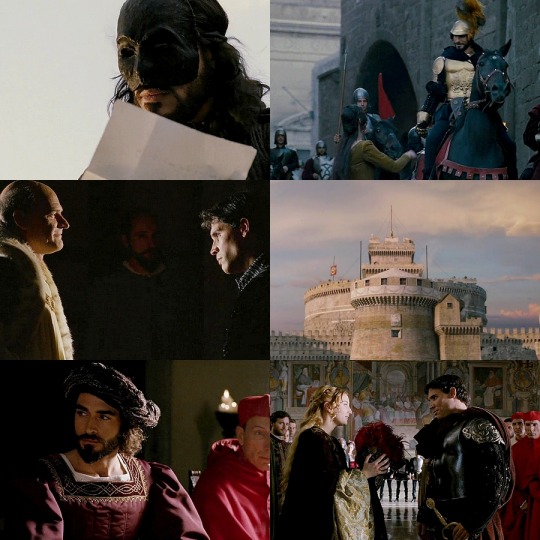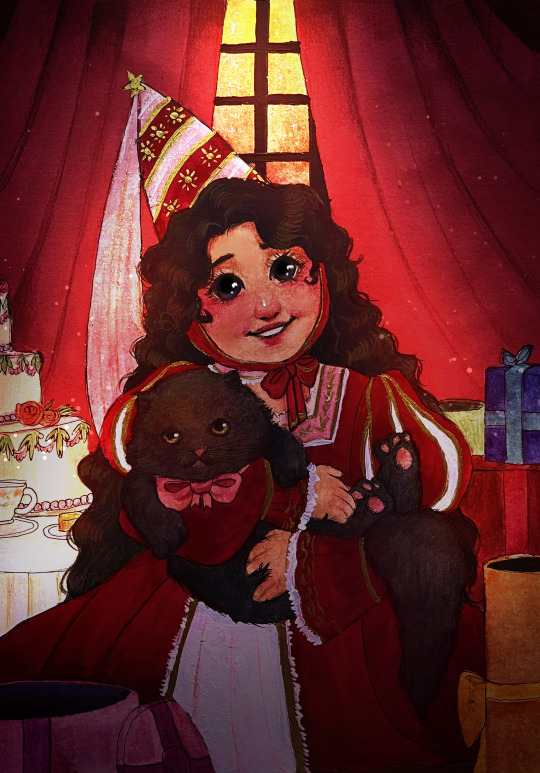Lista de gifsets de El Ministerio del Tiempo https://docpiplup.tumblr.com/post/628764629659795456/t3 (Emdt): Amelia ( https://docpiplup.tumblr.com/post/624111616419676160/gifsets-emdt) Alonso ( https://docpiplup.tumblr.com/post/624171871604277248/gifsets-emdt ) Julián ( https://docpiplup.tumblr.com/post/624173182694391808/gifsets-emdt) Velázquez ( https://docpiplup.tumblr.com/post/624179841564131328/gifsets-emdt) Angustias ( https://docpiplup.tumblr.com/post/624185261724729344/gifsets-emdt ) Salvador Martí ( https://docpiplup.tumblr.com/post/624342550421159936/gifsets-emdt ) Ernesto ( https://docpiplup.tumblr.com/post/624344464571449344/gifsets-emdt ) Irene ( https://docpiplup.tumblr.com/post/624345749865594880/gifsets-emdt ) Lola Mendieta ( https://docpiplup.tumblr.com/post/624360182224388096/gifsets-emdt ) Jesús Méndez, "Pacino" ( https://docpiplup.tumblr.com/post/629614973939761153/gifsets-emdt) Personajes históricos/episódicos ( https://docpiplup.tumblr.com/post/624419961761333248/gifsets-emdt ) Federico (https://docpiplup.tumblr.com/post/631048912129687552/gifsets-emdt) Ambrosio Spínola ( https://docpiplup.tumblr.com/post/624362053479661568/gifsets-emdt )
Last active 60 minutes ago
Don't wanna be here? Send us removal request.
Text

Our 78th art piece is...
Aegon III and Daenaera Velaryon, by @varoness here on tumblr! For arcane_peony on twitter.
We’re currently not taking further commissions. Check out our page for our current information and to see how you can still help Palestinians in need!
#aegon iii targaryen#daenaera velaryon#aegon iii x daenaera#asoiaf#asoiaf art#asoiaf fanart#a song of ice and fire#fire and blood
506 notes
·
View notes
Photo

The Blood Magic by Victor Manuel Leza
Ser Jorah Mormont and Daenerys outside the tent where Mirri Maz Duur performs blood magic on Khal Drogo.
103 notes
·
View notes
Text

Moiraine coming to live with Lan and Nynaeve in Malkier bc it is what they deserve ;-;
prints available here!
2K notes
·
View notes
Text

Our 81st art piece is...
Bloodraven, by @daenysdefender here on tumblr! For @mircallaruthven.
We’re currently not taking further commissions. Check out our page for our current information and to see how you can still help Palestinians in need!
#brynden rivers#bloodraven#asoiaf fanart#a song of ice and fire#asoiaf art#fire and blood#valyrianscrolls#asoiaf
356 notes
·
View notes
Text


Los Borgia (2006)
42 notes
·
View notes
Text
got/asoiaf x star wars troopers
I've done some "star wars characters in a got/asoiaf medieval setting", so I decided to try my hand with the reverse. And where better to start than with troopers?

(more in depth detail on the different armor styles under the cut)

For the Kingsguard, I of course went with the Emperor's Guard for armor inspiration. I kept the three helmet fins from the GoT show, and the armor has been adapted from the show design. The helmet itself, especially the visor, is actually more reminiscent of the Republic Senate Guard. I went with the t-visor style both for accuracy to the GoT show helmets and also to have a t-visor trend with Targaryen affiliated troopers (which will be seen more later). The Kingsguard carry the double-bladed vibroblades wielded by Imperial Guard members Kir Kanos and Carnor Jax in the Crimson Empire comics.

Using the stormtrooper armor as a reference for the Lannister troopers was a no-brainer. The GoT show helmets had a similar two eye-hole design, and the face mask was similar to the front design of the stormtrooper helmet. Then I painted the armor to match the color patterns on the show armor.

For House Tully, I went with the Republic ARF trooper as the base for the armor design. The armor designs for House Tully soldiers from both GoT and HotD don't have much in terms of plate armor (it mostly was layers of chainmail or the scale armor tunics), so I used video game concept art as a reference for style. I did keep the fishscale design on the tunic though.

The House Tyrell helmet is based on the Clone Cadet Training armor design from The Clone Wars. That helmet was the closest to the design from the GoT show. The rest of the design was just adapted from the show armor.

House Stark, of course, is based on the Snow Trooper armor, specifically the Clone Cold assault Trooper armor that features in the early seasons of the Clone Wars. The helmet, the gambeson, and the shoulder pieces are the main carry-over from the actual House Stark armor.

For House Greyjoy, I took inspiration from the various iterations of SCUBA troopers. The helmet is from the First Order SCUBA troopers (featuring in Star Wars: Resistance). The rest of the armor is a mixed version of the Clone SCUBA troopers that featured in the two Clone Wars animations. The torse design is also reminiscent of the armor worn by the Greyjoys in GoT.

The helmet for the Targaryen troopers was based on the mandalorian helmet design, specifically the carry-over of the t-visor. The rest of the armor, using the HotD design as a base, is built off the First Order Stormtrooper armor.

The Armor for House Arryn is based off the armor used by the Mandalorian Imperial Supercommandoes that appeared in Star Wars: Rebels, though I adapted it with the helmet with a Clone BARC trooper visor and added the topfin. The rest of the armor/color patterns are based on the armor design from HotD.

The House Baratheon armor is mostly based off the Clone ARC Trooper armor from the Clone Wars. The torso design was similar enough to the GoT House Baratheon armor that it seemed like a good fit. The helmet with its t-visor is more Mandalorian in nature, calling on the connection House Baratheon has to House Targaryen.

The House Martell armor takes inspiration from the Clone Desert Trooper armor. Most of the armor design is from the clone armor, but some parts are inspired by the armor worn by Oberyn Martell in GoT as well as concept art I found on the web.
#got/asoiaf x star wars#troopers#house lannister#house tully#house tyrell#house stark#house greyjoy#house targaryen#house arryn#house baratheon#house martell#game of thrones#a song of ice and fire#asoiaf#star wars#kingsguard#senate guard#imperial guard#stormtrooper#arf trooper#clone cadet armor#snow trooper#cold assault trooper#scuba trooper#desert trooper#supercommando#house of the dragon
21 notes
·
View notes
Link
阿梅利亚问胡里安他向她求婚时说的话是什么意思。阿隆索研究摩托车。
13 notes
·
View notes
Text

rhaenys & balerion
679 notes
·
View notes
Text

I love shows which are about modern people meeting people from the past
8 notes
·
View notes
Text
—13th June, 1893:

>>Very bad news make presence in the home... “Oh, it can’t be. No, it can’t possibly be…!”
Mini sketch of a comic with my Ministry of Time self-insert, Águeda :>
15 notes
·
View notes
Note
baby Jon baby robb playing with evn babbier Sansa before they were all caught up in the politics of bastardism. and (this is very important) they are all bumbling around because they are wrapped up in an absurd amount of furs
im extremely aware of the fact that i do not know how to draw children and they always end up looking like teenagers. featuring smol arya

"mom said to take me with you"

my askbox is always open to art and analysis requests. you can tip me here, and you can check out my (free) ko-fi here!
357 notes
·
View notes
Text

UNMASKING THE BLUEBOTTLE REVEALING FOUR DISTINCT SPECIES THROUGH GLOBAL CITIZEN SCIENCE
For over two centuries, the Portuguese man o’ war (Physalia spp) was considered a single, cosmopolitan species, drifting across the world’s oceans and stinging unsuspecting swimmers. But new genomic research has overturned this long-held view, revealing that Physalia is not one species, but at least four: P. physalis, P. megalista, P. utriculus, and a newly described species, P. minuta. Researchers sequenced the genomes of 151 specimens from around the globe and found strong reproductive isolation between genetic lineages, even when their distributions overlap. This evidence aligns with historical descriptions from the 18th and 19th centuries, which proposed several species that were later dismissed due to limited data.
Crucially, the study integrated over 4,000 photographs from iNaturalist, using citizen science to match distinct morphologies with genetic lineages. These images, contributed by amateur naturalists, swimmers, and lifeguards, allowed researchers to confirm physical differences that earlier taxonomists could not consistently observe due to preservation challenges. The result is a rare success story in which modern genomics, historical records, and participatory science come together to clarify the taxonomy of one of the ocean’s most recognisable creatures.
The discovery not only rewrites the story of Physalia but also challenges assumptions about biodiversity in the open ocean, reminding us that even the most visible marine life can hold hidden complexity, and that everyone, from sailors of the past to today’s citizen scientists, has a role to play in uncovering it.
Reference: Church et al., 2025. Population genomics of a sailing siphonophore reveals genetic structure in the open ocean. Current Biology.
3K notes
·
View notes
Text
If I had a nickel for every show that I watched had a 1500s man who got into trouble with the authorities for a crime he didn’t commit, told his wife to go and find their own life before he “died”, ends up in the 21st century due to his “death” and befriends someone who lives in the 21st century and a 1980s man while he’s there, I would have two nickels which isn’t a lot but it’s weird that it happened twice.


22 notes
·
View notes

















